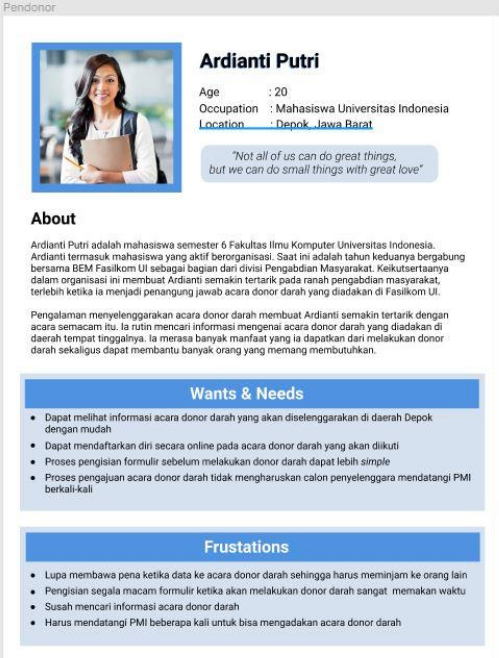Hello! This time on PPL series of posts I would like to talk about the use of persona in application design. But before we jump into the topic itself, please cut me some slack for using the Persona 5 game logo for this post hero image. This is the first image I found on Wikimedia Commons by searching for "Persona", okay. I didn't make the deliberate attempt to reference Persona the game by Atlus. Now that it's cleard up, let's get to the main dish, shall we?
What is Persona and Why Designer Needs it?
Persona is a model of imaginary person that will interact with the application. This persona can be given name, gender, age, job, characteristics, goals, frustrations (pain points), or any other fine details to make them as real as you want them to be. We may even add context-specific detail such as financial situation or major expenses if it makes sense for our application. With all these details, though sounds very specific, they are made to be a representation of application's userbase.
Even though they are made up and fictional, personas help designer make understanding of target user's expectations, concerns and motivations. Using this approach developer can cater to their respective clients in a manageable way with memorable cast of personas, instead of on thousand of individuals. Ultimately this also helps designers build stronger empathy, a core value if they want to make something that is good for the people who are going to use it.
Personas are not real people, but they are based on the behaviors and motivations of real people we have observed and represent them throughout the design process.
Alan Cooper
Persona's Fundamentals
Here is the three most important thing your persona needs in order to be useful when designing application.
- Motivation, Reasons for user to reach their goals.
- Attitude, User behavior that explains the user characteristics.
- Comfort Level, The measurement of how comfortable a user to use an information technology.
How to Create Persona?
Persona is created based on the understanding of user's motivation and priorities. Here is the steps to create persona based on Alan Cooper's book, About face 3: The Essentials of Interaction Design:
- User Research
User research can be conducted using multitude of methods such as questionnaire, interview, observation, and vice versa.
- Identifying Variables
In this stage, we need to decide on key variables that will determine the user groups of our product. For example, users are classified based on skill level, motivation, goal, or age.
- Defining User Groups
We are done selecting some key variables. Now, we can move on to group users from our research into our variables.
- Identifying Patterns
From our previously created groups, we can try to identify user patterns. This patterns will be the foundation of our new personas.
- Creating Persona
Finnaly we can create our persona from previously identified patterns. In general, a persona can be made up of biodata, background information, motivations, goals, and pain points. However, we can also add more detail such as skills, habits, quote, and even profile picture to our persona as needed.
Persona in our Project
At the end, I want to present you with an example of Persona in our project. Although it is in Indonesian, you can also see that it checked all of the important points and even some additional information such as quote and profile picture.
